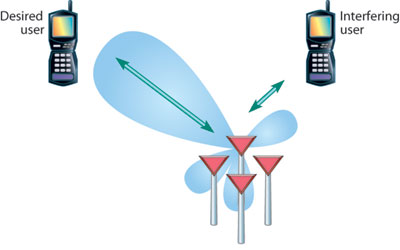Antenna Tilt : Mechanical vs Electrical
For RF optimization and Design purposes, engineers/SON algorithms generally recommend tilt changes (not getting into optimization details in this blog), antenna tilt can be changed by two types of mechanisms:
- Mechanical Down-Tilt: where the antenna is tilted as a whole, including all its segments.
- Electrical Down-Tilt: where there is adjustment of phase of the control signals given to individual segments of the antenna. As a result the virtual distance between the antenna back-plate and each single segment varies so that an apparently tilted surface of the antenna front plate is resulting.
The below figures give a bird’s eye view of the two mechanisms:
There is no specific comparison between both these tilts as differences depend on case-to-case scenarios. However, a broad comparison is shown below for the two mechanisms:
|
Mechanical Tilt |
Electrical Tilt |
|
Mechanical tilt will decrease coverage lengthwise from the sector, but in width, the coverage will stay the same, more like an ellipse shape type coverage on the ground |
Electrical tilt decreases both length and width, like a circle on the ground which is getting smaller and smaller, but stays a circle |
| Mechanical tilt is used on tall sites, typically on top of hills, because electrical tilt is not enough. | Recommended for sites which are not tall and inside city limits. |
| Decrease coverage and Does not add Interference as in case of Electrical tilts | Decrease coverage and does not increase overlap in sectors |
| Sector overlaps are increased | Increases interference, as portion of energy based on electrical tilts is transmitted in the upper side lobe reducing the energy in lobe facing towards ground hence reducing coverage. |
| Mechanical tilt will lift up the back lobe of the antenna, so go easy with mechanical tilt. |
Electrical tilt does not induce increase of back lobe |
To have an idea about how the cell radius will be based on the tilt angle, we can approx use the following model to calculate it:
Depending on the chosen down-tilt, a geometric cell radius is given as:
Generally, from an industrial view-point, electrical tilt is preferred compared to mechanical tilt. An adaptation of the antenna settings to the expected traffic distribution and cell-size is recommended anyway. Basically, a rule of thumb applies that the smaller the cell-size, the larger is the antenna down-tilt, and the higher the traffic load per cell, the smaller the antenna down-tilt should be.
Article Submitted By Mr Sibasis Das

Sibasis Das is Sales Manager for South Asia region at iBwave Solutions Inc. He is Technical Sales professional with 12+ years of experience in Technical Sales, Business Development, Product Engineering, and Project Management, with special domain knowledge of Software Sales ,Radio Frequency ( RF ) and Microwave Products and Services





